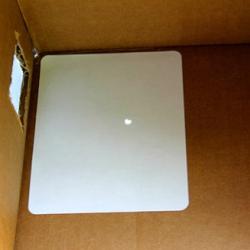Source Institutions
Source Institutions
Add to list Go to activity
Activity link broken? See if it's at the internet archive

In this activity, learners discuss and investigate how cameras, telescopes, and their own eyes use light in similar ways. By building their own pinhole viewers, learners make observations about the principles of light, and how design affects the quality of their observation tool.
- 5 to 10 minutes
- 45 to 60 minutes
- 1 cent - $1 per student
- Ages 11 - 14
- Activity, Lesson/Lesson Plan
- English
Quick Guide
Materials List (per student)
- 4 toilet paper tubes
- 4 pieces of black construction paper
- 8 rubber bands
- wax paper (cut into four by four-inch square)
- tracing paper (cut into four by four-inch square)
- tissue paper (cut into four by four-inch square)
- white plastic bag (cut into four by four-inch square)
- aluminum foil (cut into four by four-inch square)
- roll of scotch or masking tape
- box of pushpins
Subjects
-
Earth and Space Science
-
Astronomy
- Probes, Satellites and Spacecraft
-
Astronomy
-
Physical Sciences
-
Light and Optics
- Reflection and Refraction
-
Light and Optics
-
Engineering and Technology
- Engineering
- Technology
-
Life Sciences
-
Human Body
- The Brain and Nervous System
-
Human Senses and Perception
- Vision
-
Human Body
-
The Nature of Science
-
The Scientific Process
- Conducting Investigations
-
The Scientific Process
-
The Nature of Technology
-
Technology and Society
- Technology and History
-
Technology and Society
Informal Categories
- Arts and Crafts
- Outdoor Activity
- Photography and Film/Video
Audience
To use this activity, learners need to:
- see
- be mobile
- touch
Learning styles supported:
- Links STEM to other topics of interest such as arts and humanities
- Involves hands-on or lab activities
Other
Components that are part of this resource:
Includes alignment to state and/or national standards:
This resource is part of:
Access Rights:
- Free access
By:
Rights:
- All rights reserved, Science Friday,
